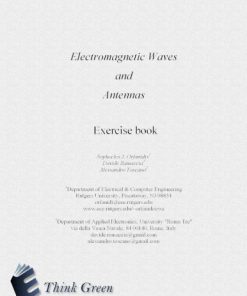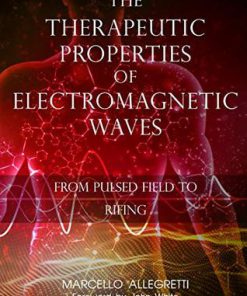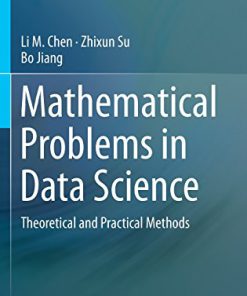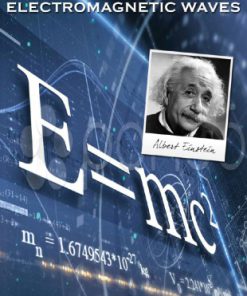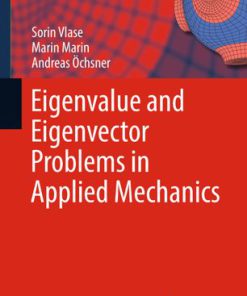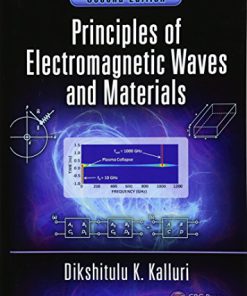Electromagnetic Waves in Complex Systems Selected Theoretical and Applied Problems 1st Edition by Springer ISBN 3319316311 9783319316314
$50.00 Original price was: $50.00.$25.00Current price is: $25.00.
Electromagnetic Waves in Complex Systems Selected Theoretical and Applied Problems 1st Edition by Springer – Ebook PDF Instant Download/Delivery: 3319316311, 9783319316314
Full download Electromagnetic Waves in Complex Systems Selected Theoretical and Applied Problems 1st Edition after payment
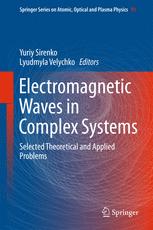
Product details:
ISBN 10: 3319316311
ISBN 13: 9783319316314
Author: Springer
This book gives guidance to solve problems in electromagnetics, providing both examples of solving serious research problems as well as the original results to encourage further investigations. The book contains seven chapters on various aspects of resonant wave scattering, each solving one original problem. All of them are unified by the authors’ desire to show advantages of rigorous approaches at all stages, from the formulation of a problem and the selection of a method to the interpretation of results. The book reveals a range of problems associated with wave propagation and scattering in natural and artificial environments or with the design of antennas elements. The authors invoke both theoretical (analytical and numerical) and experimental techniques for handling the problems. Attention is given to mathematical simulations, computational efficiency, and physical interpretation of the experimental results. The book is written for students, graduate students and young researchers.
Electromagnetic Waves in Complex Systems Selected Theoretical and Applied Problems 1st Table of contents:
1 New Analytical Solutions of Selected Electromagnetic Problems in Wave Diffraction Theory
Abstract
1.1 Introduction
1.2 Wave Propagation Near an Irregular Impedance Structure
1.2.1 Wave Propagation Over a Plane Surface of Variable Conductivity
1.2.2 A Field of Linear Magnetic Current in a Plane Waveguide with Smoothly Varying Impedance of Its
1.2.2.1 Reduction of the Problem to an Integral Equation
1.2.2.2 Solution of the Integral Equation
1.2.2.3 Residue Series Representation
1.2.2.4 Transformation of Eigenmodes on the Waveguide Junction
1.3 The Cycle Slipping Phenomenon and the Degeneracy of Waveguide Modes
1.3.1 Introduction
1.3.2 Problem Formulation and Solution
1.3.3 The Watson Transformation
1.3.4 A Numerical Experiment
1.4 Pulsed Radiation from a Line Electric Current Near a Planar Interface
1.4.1 Problem Formulation
1.4.2 Reduction to Single Integrals
1.4.3 The Field in the First Medium
1.4.4 The Field in the Second Medium
1.4.5 Discussion and Conclusion
1.5 Transition Radiation of a Longitudinal Magnetic Dipole in the Case of Diffuse Interface
1.5.1 Problem Formulation and Solution
1.5.2 The Criterion of the Interface ‘Sharpness’
1.6 The Biisotropic Epstein Transition Layer
1.6.1 Equations for the Electromagnetic Field in a Biisotropic Medium
1.6.2 Problem Formulation and Solution
1.6.3 Analysis of the Reflected and Transmitted Fields
1.7 Negative Refraction in Isotropic Double-Negative Media
1.7.1 Negative Refraction Phenomenon in Homogeneous Double-Negative Media
1.7.2 A Model of Smoothly Inhomogeneous Flat-Layered Double Negative Medium. Solution of the Problem
1.7.3 Analysis of the Expressions for Fields
1.8 Distorting Coatings as an Alternative to Masking Coatings
1.8.1 Transformation Optics, Masking Coatings, Distorting Coatings
1.8.2 Radical Distortion of Radar Image by Applying a Special Coating on the Metamaterial Surface
1.9 Conclusion
References
2 Dyadic Green’s Function for Biaxial Anisotropic Media
Abstract
2.1 Introduction
2.2 Formulation of the Problem
2.3 Initial Representation for Dyadic Green’s Function
2.4 Transformation of the Original Representation. Singular Part of Dyadic Green’s Function
2.5 Regular Part of Dyadic Green’s Function
2.6 The Physical Solution
2.7 Conclusion
References
3 Operator Fresnel Formulas in the Scattering Theory of Waveguide Modes
Abstract
3.1 Introduction
3.2 The Mode-Matching Technique in the Problem of a Waveguide Step-like Discontinuity
3.2.1 The Classical Mode-Matching Technique: An Example of Application
3.2.2 The Mode-Matching Technique in the Problem of a Step Discontinuity in a Waveguide: Standard Ap
3.2.3 New Formulation of the Problem of Scattering of Waveguide Modes
3.3 Matrix Operator Formalism in the Scalar Mode Analysis
3.4 Generalized Mode-Matching Technique in the Step Discontinuity Problem
3.4.1 Derivation of the Operator Fresnel Formulas
3.4.2 Reciprocity Principle and Energy Conservation Law in the Operator Form
3.4.3 Correctness of the Matrix-Operator Model
3.5 Justification of the Truncation Technique for Solving Operator Equations
3.5.1 Construction of Projection Approximations for the Fresnel Formulas
3.5.2 Unconditional Convergence of the Truncation Technique
3.5.3 Rate of Convergence of the Approximations of Scattering Operators
3.6 Mittra Rule for Scattering Operators
3.7 Novel Matrix Models for the Problem of a Step Discontinuity in a Waveguide
3.8 The Conservation Laws in Operator Form for Two Classes of Mode Diffraction Problems
3.9 Universality of the Operator Fresnel Formulas
3.9.1 Step-Like Discontinuity in a Waveguide
3.9.2 Generalized Operator Fresnel Formulas for Resonant Discontinuities
3.10 Matrix Scattering Operators
3.10.1 Properties of Reflection and Transmission Operators
3.10.2 Basic Operator Properties of the Generalized Scattering Matrix
3.11 Conclusion
Appendix A: Vectors and Their Spaces
Vectors in the Hilbert Spaces l_{2}, tilde{l}_{2} and tilde{tilde{l}}_{2}
Vectors in the Hilbert Space h_{N} equiv l_{2}^{N}, N ge 2
Operator Vectors in the Space {hbox{V}}_{N} equiv left( {l_{2} to l_{2} } right)^{N}, N ge 2
Pontryagin Space Pi_{nu } with Indefinite Metric
Appendix B: Infinite Systems of Linear Algebraic Equations
Early Results of the Theory
Completely Regular Systems
Regular Systems
Quasi-regular Systems
Matrix Contractions
The Schur Test and the Young Inequality. Hilbert Matrices
Compact (Completely Continuous) Operators
The Kojima and Toeplitz Matrix Operators
Appendix C: Operator Forms of the Energy Conservation Law Under Time Reversal
References
4 Two-Dimensionally Periodic Gratings: Pulsed and Steady-State Waves in an Irregular Floquet Channel
Abstract
4.1 Introduction
4.2 Fundamental Equations, Domain of Analysis, Initial and Boundary Conditions
4.3 Time Domain: Initial Boundary Value Problems
4.4 Exact Absorbing Conditions for the Rectangular Floquet Channel
4.5 Some Important Characteristics of Transient Fields in the Rectangular Floquet Channel
4.6 Transformation Operator Method
4.6.1 Evolutionary Basis of a Signal and Transformation Operators
4.6.2 Equations of the Operator Method in the Problems for Multilayered Periodic Structures
4.7 Some Important Properties of Steady-State Fields in the Rectangular Floquet Channel
4.7.1 Excitation by a TM-Wave
4.7.2 Excitation by a TE-Wave
4.7.3 General Properties of the Grating’s Secondary Field
4.7.4 Corollaries of the Reciprocity Relations and the Energy Conservation Law
4.8 Elements of Spectral Theory for Two-Dimensionally Periodic Gratings
4.8.1 Canonical Green Function
4.8.2 Qualitative Characteristics of the Spectrum
4.9 Conclusion
References
5 The Exact Absorbing Conditions Method in the Analysis of Open Electrodynamic Structures
Abstract
5.1 Introduction
5.2 Circular and Coaxial Waveguides
5.2.1 Formulation of the Model Problem
5.2.2 Radiation Conditions for Outgoing Waves
5.2.3 Nonlocal Exact Absorbing Conditions
5.2.4 Local Exact Absorbing Conditions
5.2.5 Equivalence Theorem
5.3 Compact Axially Symmetric Structures
5.3.1 Formulation of the Model Problem
5.3.2 Radiation Conditions for Outgoing Waves
5.3.3 Far-Field Zone Problem, Extended and Remote Sources
5.3.4 Virtual Feed Lines in Compact Open Structures
5.4 Characteristics of Steady-State and Transient Fields in Axially Symmetric Structures
5.4.1 Frequency-Domain Prototypes for Initial Boundary Value Problems
5.4.2 Electrodynamic Characteristics of Open Axially Symmetric Structures
5.4.3 Spectral Characteristics of Open Resonators
5.5 Plane Models for Open Electrodynamic Structures
5.5.1 The Key Problem
5.5.2 Exact Absorbing Conditions for Parallel-Plate Waveguides
5.5.3 Exact Absorbing Conditions for Cylindrical Virtual Boundary in Free Space
5.5.4 Exact Absorbing Conditions for Rectangular Virtual Boundary in Free Space
5.5.5 Frequency-Domain Formalism and Main Characteristics of Open Plane Structures
5.6 3-D Vector Models
5.6.1 Exact Absorbing Conditions for Regular Hollow Waveguides
5.6.2 Radiation Conditions and Exact Absorbing Conditions for Spherical Virtual Boundary in Free Spa
5.6.3 TM-Excitation: Frequency-Domain Characteristics
5.6.4 TE-Excitation: Frequency-Domain Characteristics
5.7 Accurate and Efficient Calculations
5.7.1 General Questions
5.7.2 Nonlocal or Local Conditions?
5.7.3 The Blocked FFT-Based Acceleration Scheme
5.7.4 Efficiency and Accuracy of the Blocked FFT-Based Acceleration Scheme. Numerical Results
5.7.5 Test Problems
5.8 Conclusion
References
6 High-Power Short Pulses Compression: Analysis and Modeling
Abstract
6.1 Introduction
6.2 Exact Absorbing Conditions Method: 2-D Case
6.2.1 Planar Structures
6.2.2 Axially Symmetric Structures
6.3 Energy Accumulation in Direct-Flow Waveguide Compressors
6.3.1 Slot Switches
6.3.2 Active Compressors Based on Circular and Coaxial Waveguides
6.3.3 Distributed Switches and Active Compressors Based on Rectangular Waveguides
6.4 Radiation of High-Power Short Pulses
6.4.1 Radiation of Compressed Pulses by Simple Antennas
6.4.2 Novel Antenna Array Design with Combined Compressor/Radiator Elements
6.5 Compression of Frequency-Modulated Electromagnetic Pulses in Hollow Waveguides
6.5.1 Transport Operators for Regular Waveguides
6.5.2 Pulse Compression in Regular Waveguides
6.6 Conclusion
References
7 Diffraction Radiation Phenomena: Physical Analysis and Applications
Abstract
7.1 Introduction
7.2 Periodic Structures and Dielectric Waveguides: Analysis Techniques
7.2.1 Plane Models for Infinite Gratings: Time-Domain Representations
7.2.2 Plane Models for Infinite Gratings: Frequency-Domain Representations
7.2.3 Infinite Gratings as Open Resonators or Open Waveguides
7.2.4 Some Further Comments
7.3 Diffraction Radiation Phenomena
7.3.1 Reflecting Gratings in the Field of a Density-Modulated Electron Flow
7.3.2 Finite Gratings: Plane and Axially Symmetric Models
7.3.3 Near-Field to Far-Field Conversion by Finite Periodic Structures. Plane Models
7.3.4 Near-Field to Far-Field Conversion by Finite Periodic Structures. Axially Symmetric Models
7.4 Synthesis of Diffraction Antenna Components and Units
7.4.1 Synthesis of Radiators with Predetermined Amplitude-Phase Field Distribution on the Aperture
7.4.2 Maintenance of Antenna Operability on Coupling Level
7.5 The Low-Side-Lobe Planar Antenna
7.5.1 Radiator’s Characteristics
7.5.2 Antenna Design
7.5.3 Experimental Data
7.6 Conclusion
People also search for Electromagnetic Waves in Complex Systems Selected Theoretical and Applied Problems 1st:
Tags:
Springer,Electromagnetic Wave,Complex Systems,Theoretical,Applied Problems
You may also like…
Technique - Electronics
Electromagnetic Waves and Antennas, Exercise Book 1st Edition Sophocles J. Orfanidis
Medicine - Natural Medicine
The Therapeutic Properties of Electromagnetic Waves From Pulsed Fields to Rifing Marcello Allegretti
Business & Economics - Management & Leadership
Computers - Computer Science Computers - Cybernetics
Mathematical Problems in Data Science Theoretical and Practical Methods 1st Edition Li M. Chen
Physics - Electrodynamics
Engineering - Electrical & Electronic Engineering
Shielding of Electromagnetic Waves: Theory and Practice George M. Kunkel




